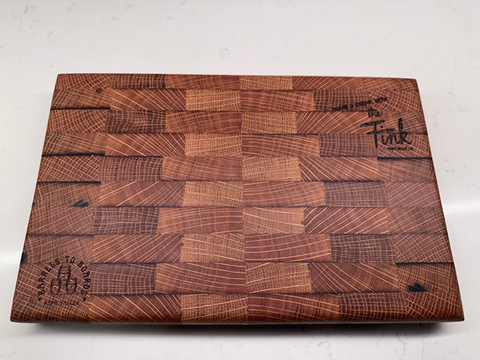
WELCOME
After years of enduring countless seasons, a wise oak tree is selected to be transformed into a wine barrel. Having nobly cradled the finest Napa Valley wines, these retired barrels have found new life as cutting boards. The legacy of the oak tree continues, born from the skilled hands of long-time Napa Valley resident Donald Buresh, a former Cooper, and founder of Barrels To Boards. These cutting boards now grace our homes, where family and friends gather to share meals, and drinks, and create lasting memories, honoring the enduring spirit of these ancient trees.

Gallery
Grow Your Vision
All boards are made from used wine and bourbon barrels.
Each board is custom-made. Special orders can include but are not limited to:
Size and thickness, Juice grooves and handles.
We also offer laser engraving on boards to personalize gifts
Birthdays, Weddings and new homes.
This is a personal gift that can last for generations.
You may be asking yourself
Q and A of cutting boards:
What is the difference between long grain and end grain cutting boards?
Thick of the wood fibers that make up wood like bristles on a brush. On Long Grain, it's like the brush is lying left to right, and you're chopping those fibers in half. On End Grain, you're actually cutting between the wood fibers, keeping the board sharper longer and making it easier to clean and thus more sanitary.
What is the disadvantage of end grain cutting board?
Chopping boards made of end grain wood need to be oiled more often as they absorb moisture faster. As more pieces of wood have to be joined together to form one chopping board, which is a time-consuming process, they are generally a bit more expensive.
Are end grain cutting boards more durable?
End grain is typically better for a wooden cutting board because it is less prone to knife marks and is more durable.
Why are end grain cutting boards so thick?
Their extra fiber makes them more resistant to dents, scratches, and grooves. Thicker cutting boards are also less likely to warp or split since it takes them longer to absorb moisture, especially for closed-grain boards.
Are end grain boards more expensive?
Plain and simple, it takes longer to make an end grain cutting board than it does to make an edge grain board. Because the process is more involved, the cost is generally higher.
To ensure your one-of-a-kind board is treated with care we offer our own
Barrels To Boards Butter
Application Instructions:
1. Ensure the wood surface is clean and dry before applying the conditioner.
2. Using a soft cloth, scoop a small amount of the conditioner.
3. Apply the conditioner onto the wood surface in a circular motion, covering the entire area evenly.
4. Allow the conditioner to penetrate the wood for a few minutes.
5. Buff the surface gently with a clean cloth to remove any excess conditioner.
6. For best results, reapply the conditioner periodically to maintain a healthy wood surface.
Caution:
* Store in a cool, dry place away from direct sunlight.
For order information
Contact Donald@donaldburesh.com for custom orders and pricing




















